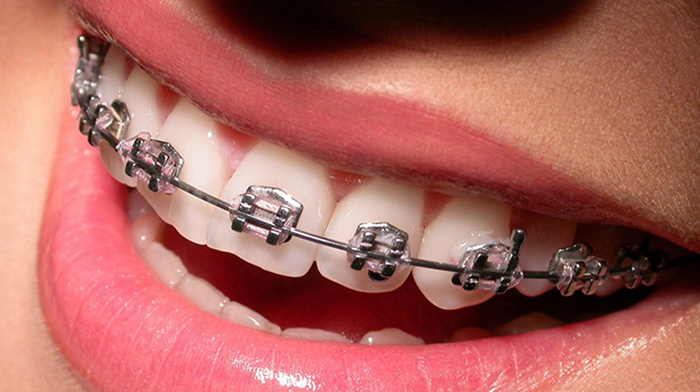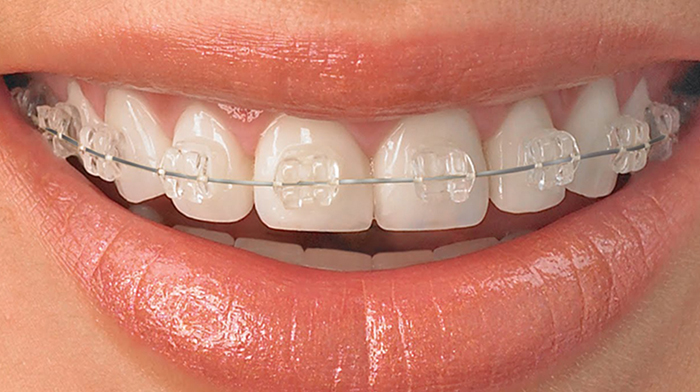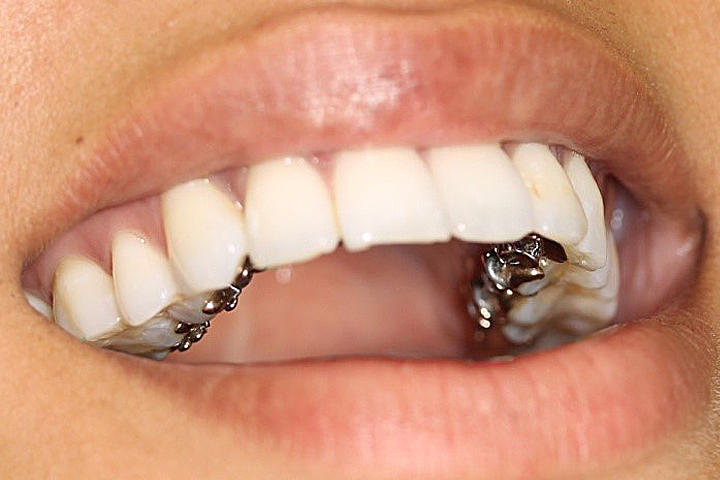
Types of Braces
Metal Braces
Metal Braces can be silver or golden. The are very strong and can withstand most types of treatment. At first, gums and cheek tissue may become irritated, but there are several first aid tricks to deal with the discomfort such as saltwater rinses and applying wax to the metal brackets.
Most traditional metal braces require an elastic O-shaped rubber band, called a ligature, to hold the archwire onto the bracket. Sometimes metal tie wires (wires that twist around the bracket) are used in place of elastic ligatures.
Metal brackets tend to be less expensive than other types of brackets. And now, choices of colorful ligatures are available in a rainbow of colors to individualize personal style.


Ceramic (Clear) Braces
Ceramic braces are made of clear materials and are less visible on your teeth than metal braces. While they are visually less prominent, they do require more attention to oral hygiene as ceramic braces are larger and more brittle than their metal counterparts. For these reasons, ceramic braces are generally used on upper teeth rather than on the lower.
Lingual
These are the ultimate custom treatment for patients whose lifestyle or job dictate that their braces cannot be seen. Lingual braces are placed on the inside, rather than the outside, of your teeth. Invisible custom braces work similar to traditional braces, although they are more expensive because they cost more to manufacture. (New technologies such as advanced cadcam and stereolithography are used to create them, and robiotics are utilized to pre-bend the orthodontic wires that fit into the braces).Clear appliances (such as Invisalign®) use a series of invisible, removable, and comfortable aligners to straighten your teeth. Not only are the aligners invisible, but they are also removable. That means you can eat and drink what you want while in treatment, plus brushing and flossing are easier. The aligners are comfortable and have no metal to cause mouth abrasions during treatment.

